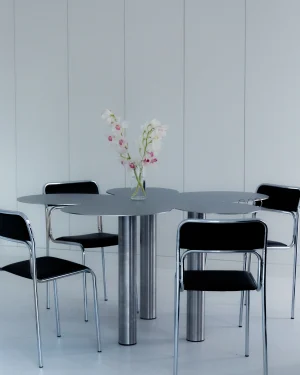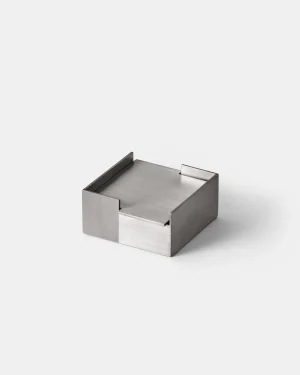
Metal Work: The Mastery of the Art Form
In the world of artistic creation, the allure of metal work stands resolute. The realm of metals offers a kaleidoscope of possibilities for artists to mold, meld, and manipulate. It captivates the gaze and imagination of enthusiasts and connoisseurs alike. Experience the warm, timeless glow of brass and bronze, to the sturdy elegance of iron. Within the contemporary versatility of steel, and the modern sleekness of aluminum and metal.
What is Metal Work?
Metal work is a multifaceted art form centered around the transformation of metals into functional or decorative objects. Artisans manipulate metals like brass, iron, metal, bronze, steel, and aluminum to craft various items. This melding of technical skill of traditional blacksmithing and modern welding and casting, an artistic vision results in a diverse array of creations. This diversity showcases the unique properties of each metal, bridging the gap between craftsmanship and creativity.


The Origins of Metal Work.
Ancient civilizations discovered and initiated metalworking, utilizing metals primarily for practical purposes such as crafting tools and weapons. The craft evolved as these civilizations developed advanced metallurgical techniques. The Bronze Age signaled a significant milestone when the alloy’s malleability led to the creation of intricate ornaments and tools.
Subsequent civilizations continued to refine metalworking techniques, with a focus on iron for its strength. Over time, metalwork intertwined with artistic expression, giving rise to elaborate jewelry, sculptures, and architectural elements. This evolution signifies the transition from utilitarian necessity to a sophisticated artistic endeavor that continues to captivate and inspire people worldwide.




See More Like This: Visit Our Online Gallery of Metal Work
What are the Key Characteristics of Metal Work?
Metal work exhibits several key characteristics that define its nature and appeal:
- Versatility: Metal work spans a wide range of applications, from decorative objects to large-scale architectural features, demonstrating its adaptability to diverse purposes.
- Durability: Metals are known for their robustness and longevity, making metalwork creations resilient and able to withstand the test of time.
- Manipulability: Different metals can be shaped, molded, hammered, and folded into intricate forms. This allows artists to experiment with a variety of techniques and designs.
- Technical Expertise: Successful metalwork demands a deep understanding of metallurgy, heat treatment, and various fabrication techniques.


Current Views in Contemporary Art and Design
Contemporary art and design have witnessed a profound resurgence of interest in metalworking, reflecting a dynamic shift in creative expression. Metal, once relegated to traditional craftsmanship, has now evolved into a cutting-edge medium for artists and designers to explore. This transformation has been driven by a fusion of technology and artistry. Now contemporary creators harness the potential of metals to craft stunning sculptures, functional furniture, and intricate jewelry.
Artists have harnessed metalworking as a potent tool to convey complex narratives and provoke thought. They manipulate metals like steel, copper, and bronze with versatility, constructing monumental sculptures that defy gravity and challenge perceptions of space. These works actively invite viewers to engage physically and emotionally, pushing the boundaries of traditional art forms and establishing connections with audiences on a visceral level.
Moreover, metalworking has become synonymous with innovation and sophistication. From sleek and minimalist furniture designs to avant-garde lighting fixtures, metal is the material of choice for architects and designers seeking to create iconic, statement pieces. Its durability and malleability allow for bold experimentation. The end result is functional art that not only complements living spaces but also serves as a testament to human creativity.
Read Now: Exploring Unique Artisan-Crafted Bronze Creations
Metal Work Within Modern Design Styles
Metal is a pivotal design element across various styles, including Brutalist, Space Age, Neo-Industrial, and Bauhaus. Explore how metal’s characteristics contribute to the distinctive aesthetics and functionality of these design approaches.
- Brutalist Design: Metal is often utilized for its raw, rugged aesthetic in Brutalist architecture. This is seen in exposed steel beams and concrete forms with metal reinforcements, adding to the style’s brutal appearance and utilitarian feel.
- Space Age Design: Shiny, reflective metals like chrome and aluminum are key in Space Age design. Sleek, futuristic furniture and lighting fixtures reminiscent of spacecraft and advanced technology.
- Neo-Industrial Design: Neo-Industrial design repurposes steel beams, pipes, and metal components to craft urban, edgy furniture and decor. Neo Industrialism celebrates the authenticity and ruggedness of industrial materials.
- Bauhaus Design: In Bauhaus design, tubular steel frames provide clean lines and lightweight aesthetics in furniture. Metal is used for detailing and accents to enhance simplicity and functionality in line with Bauhaus principles.


Read Now: Iron: Metallurgy's Cornerstone Metal
The Impact of Metal Work on the Art World
Metalwork significantly shaped the art world by broadening creative horizons and blurring traditional boundaries. Its impact is profound, evident in the creation of intricate sculptures, exquisite jewelry, and architectural wonders that seamlessly blend form and function. Metalwork’s fusion of craftsmanship and artistic expression has not only enriched aesthetics but also introduced innovative techniques, materials, and perspectives to the contemporary artistic dialogue.
Its enduring influence resonates through iconic public installations, sculptural masterpieces, and the growing fascination with functional art. As a testament to human ingenuity, metalwork continues to inspire artists, captivate audiences, and contribute to the ever-evolving landscape of art.




Read Now: Exploring Unique Artisan-Crafted Bronze Creations
Conclusion
In the intricate world of metalwork, where craftsmanship meets artistic imagination. The profound impact on the art world cannot be overstated. From its ability to transform raw materials into awe-inspiring sculptures to its fusion of form and function in architectural marvels and functional art pieces. Metal work has redefined artistic boundaries and sparked innovation.
As an art form that bridges tradition and modernity, metalwork’s influence resonates in the delicate filigree of jewelry, the monumental grandeur of public installations, and the delicate balance of aesthetics and utility in furniture and utensils. Its enduring legacy lies not only in the tangible creations but also in the inspiration it imparts, fostering creativity and pushing the envelope of what is artistically achievable. Metalwork’s presence in the art world serves as a reminder of human artistry’s boundless potential, enriching cultural heritage and inspiring generations to come.
Discover Metal Work on Adorno
-

 Pressure Vase Square€269 incl. tax
Pressure Vase Square€269 incl. tax -

 Pierced Cosmic Flower Dining Table€3.633 incl. tax
Pierced Cosmic Flower Dining Table€3.633 incl. tax -

 A45 Sofa€2.881 incl. tax
A45 Sofa€2.881 incl. tax -


 Bedda – Vase€769
Bedda – Vase€769 -


 Umu – Pendant U Lamp€835
Umu – Pendant U Lamp€835 -

 Crescent – Pendant Lamp€454 incl. tax
Crescent – Pendant Lamp€454 incl. tax -


 Carlo – Medium Desk Set€477 incl. tax
Carlo – Medium Desk Set€477 incl. tax -

 B.F.M.F Series, 90º Horizontal Sofa€21.250 incl. tax
B.F.M.F Series, 90º Horizontal Sofa€21.250 incl. tax -
Piece on sale

 Cork X | Chair 01 – Cork / Metal Stool€799
Cork X | Chair 01 – Cork / Metal Stool€799 -

 Ailix – Stainless Steel Wall Lamp€3.688 incl. tax
Ailix – Stainless Steel Wall Lamp€3.688 incl. tax -


 Cratere – Bowl€142
Cratere – Bowl€142 -

 Look Ahead€3.150 incl. tax
Look Ahead€3.150 incl. tax -

 Oio Pedestal – Stainless Steel Floor Lamp€3.125 incl. tax
Oio Pedestal – Stainless Steel Floor Lamp€3.125 incl. tax -

 Liquid – Brass & Steel Side Table€2.225 incl. tax
Liquid – Brass & Steel Side Table€2.225 incl. tax -

 Lazarus – Aluminum / Leather Armchair€2.800
Lazarus – Aluminum / Leather Armchair€2.800 -

 Tote Tray – Chrome Plated Aluminum€1.875 incl. tax
Tote Tray – Chrome Plated Aluminum€1.875 incl. tax -

 Ornament Shelf€900
Ornament Shelf€900 -

 Blue Triple A45 Bench€2.805 incl. tax
Blue Triple A45 Bench€2.805 incl. tax -


 Carlo – Small Desk Set€353 incl. tax
Carlo – Small Desk Set€353 incl. tax -

 O.F.I.S Series, Tubular Armchair, Anitgoon Edition€35.000 incl. tax
O.F.I.S Series, Tubular Armchair, Anitgoon Edition€35.000 incl. tax -

 Look Down€3.675 incl. tax
Look Down€3.675 incl. tax -


 Sasso – Incense Holder€107
Sasso – Incense Holder€107 -

 Riot Shield – Stainless Steel Screen€5.500 incl. tax
Riot Shield – Stainless Steel Screen€5.500 incl. tax -

 Arch Aluminum Calendar€215 incl. tax
Arch Aluminum Calendar€215 incl. tax







